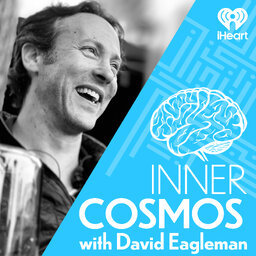Ep10 "Why is it so hard to spot a counterfeit bill?"
What do charlatans have to understand about human perception? Why are you so bad at recognizing a real penny among fakes? What did Eagleman have to do with the redesign of the Euro, and why did he campaign to the European Central Bank that all their bills should be blank with a single hologram in the middle? In this episode, explore the crossroads of perception and deception. Brief appearance from special guest Adam Savage.
 Inner Cosmos with David Eagleman
Inner Cosmos with David Eagleman


